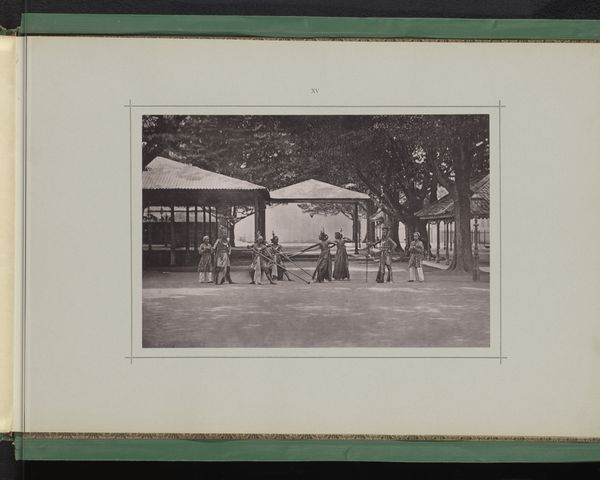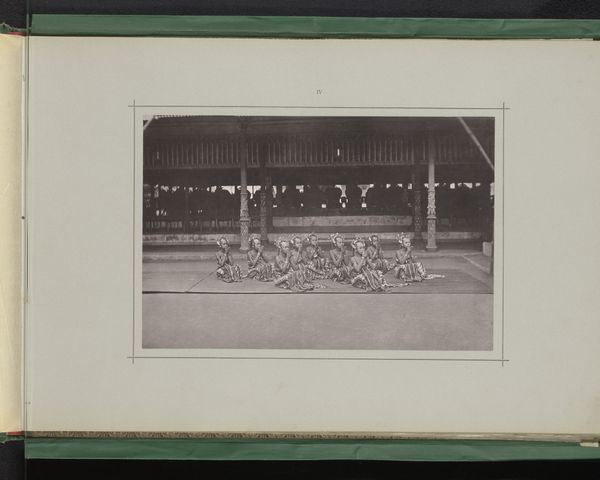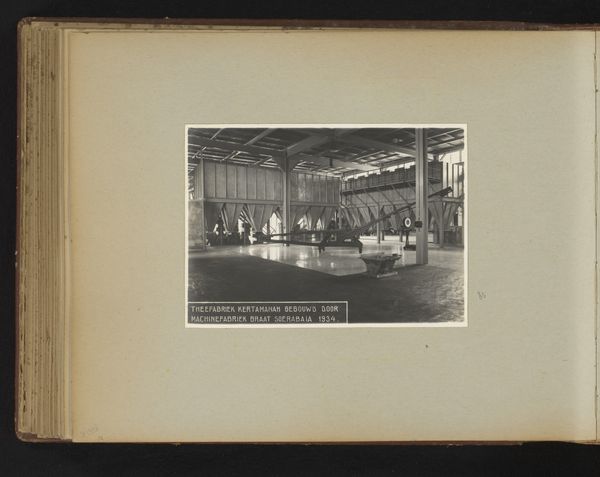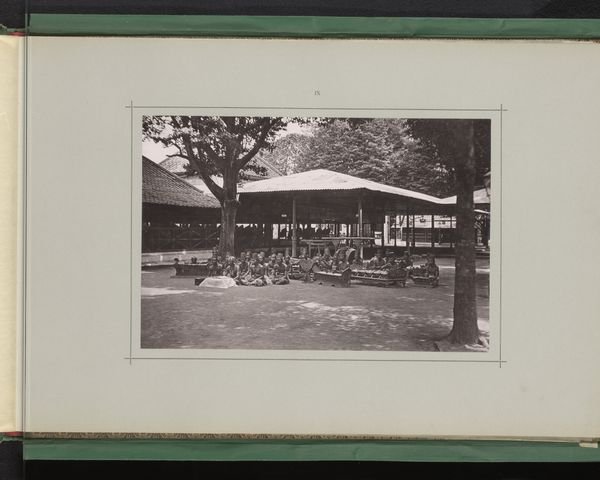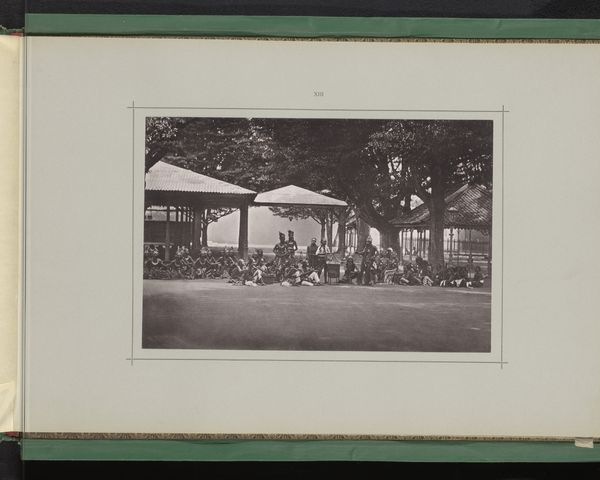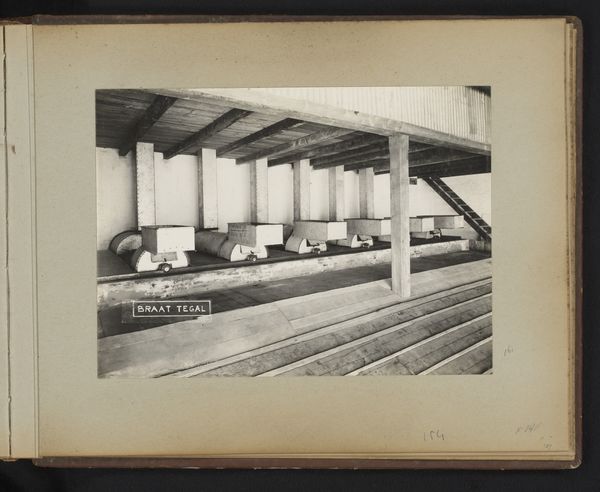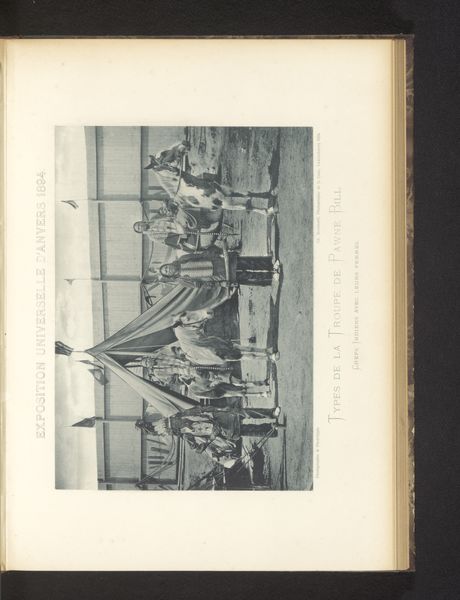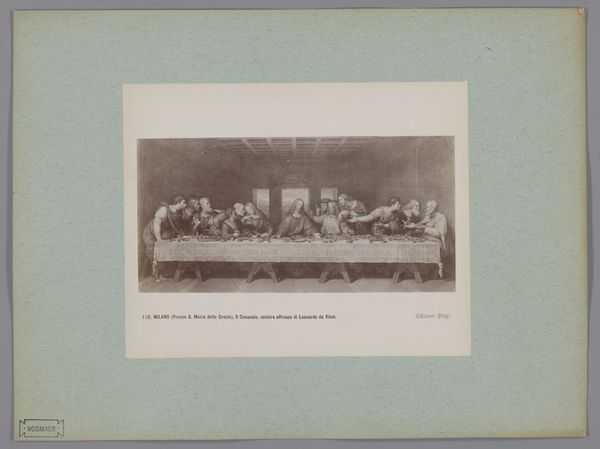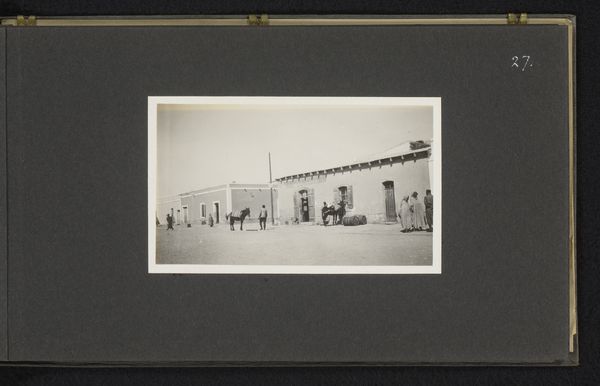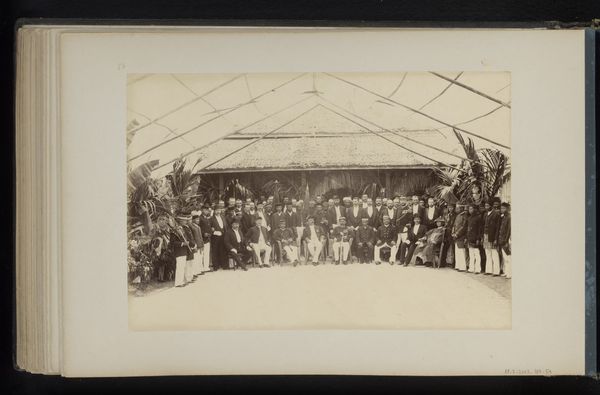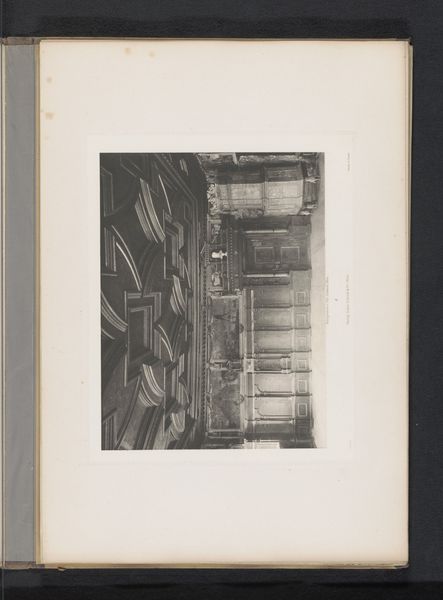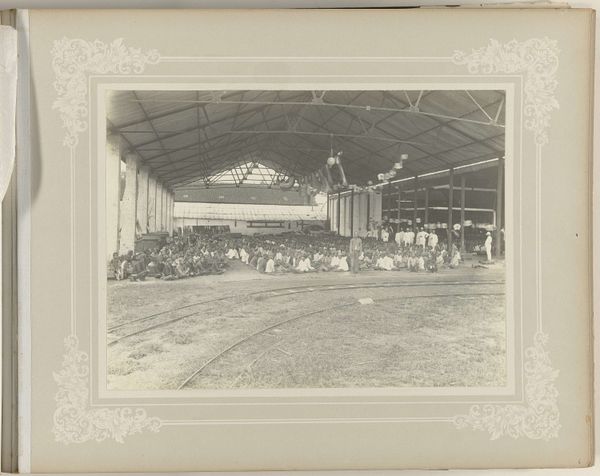
Groep vrouwen, bedaja's genoemd, staat klaar om een dans uit te voeren voor de sultan in de Kraton Ngayogyakarta Hadiningrat in Jogyakarta, Indonesië before 1888
0:00
0:00
photography, gelatin-silver-print
#
portrait
#
asian-art
#
photography
#
orientalism
#
gelatin-silver-print
#
genre-painting
Dimensions: height 182 mm, width 272 mm
Copyright: Rijks Museum: Open Domain
Editor: This gelatin-silver print, taken before 1888 by Kassian Céphas, shows a group of women, called bedoyo, poised to perform a dance for the Sultan in Yogyakarta, Indonesia. It feels so posed and stately, capturing a very specific cultural moment. What draws your eye when you look at this image? Curator: Immediately, the ordered ranks of the women strike me. Consider how dance functions, not just as entertainment, but as a potent cultural symbol. Each gesture, each garment, speaks volumes. Can you see how the image plays into the idea of the exotic Orient that was popular at that time? Editor: I think so. It feels like it’s documenting a ritual for a Western audience. The women seem very still, almost like figures in a tableau. Curator: Exactly. And the architecture frames them, almost as if they’re precious artifacts in a display. Consider the symbolic weight of the Kraton itself – it’s more than just a palace, it's the epicenter of Javanese culture, power, and cosmology. These dances re-enact myths and reaffirm the Sultan’s legitimacy, connecting him to the divine. What kind of stories might these gestures be telling? Editor: Stories of power, tradition… maybe even resistance, subtly embedded within the dance itself? Curator: Precisely! Think of the agency these women wield, embodying both the earthly and the spiritual realms through the art form they command. Do you think it's staged? Editor: It must be, at least in part, to create the impression the photographer desires. The dance becomes a cultural symbol, as you said, seen through a colonial lens. Curator: Indeed. This piece really illuminates how symbols operate, transforming across time and culture, often carrying far more weight than initially meets the eye. I'm struck by how much more there is here than just meets the eye! Editor: I agree, there is so much contained in what seems like a simple staged photo!
Comments
No comments
Be the first to comment and join the conversation on the ultimate creative platform.

